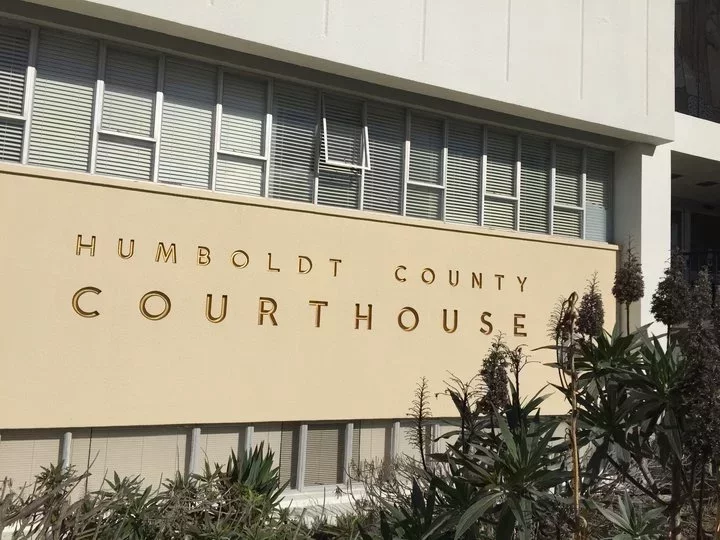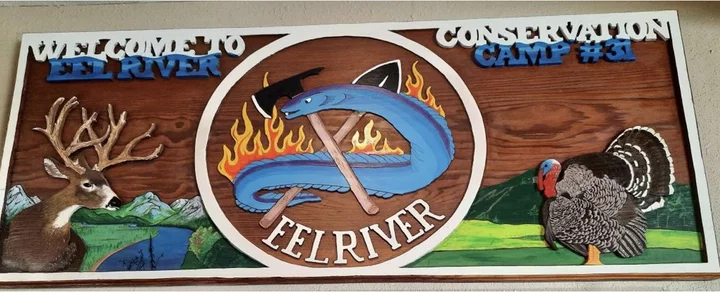File photo by Andrew Goff.
###
It’s that time of year again! No, we’re not talking about the annual “Get Out and Play Day,” though that’s awesome, too. We mean the summertime crop of reports from our invaluable Humboldt County Civil Grand Jury.
This is a big deal for fans of government accountability. Unlike a criminal grand jury, which focuses on indictments, the civil grand jury is an independent body of 19 citizen volunteers tasked with investigating the operations of local government agencies to ensure accountability, efficiency and transparency.
The Civil Grand Jury serves a watchdog function, complete with subpoena power, and local agencies are legally required to respond to the findings and recommendations included in each report. When it works the way it should, this process can lead to meaningful reforms and improved public trust.
In a brief phone conversation with this year’s foreperson, Melanie McCavour, she pointed out that California is one of only two states in the country — along with Nevada — to mandate annual civil grand juries. Pretty cool.
As you can probably tell, we at the Outpost love this annual exercise in accountability, and yet somehow this year we were caught off guard. The CGJ’s first report of the 2024-25 session was published to the county website more than a week ago. Ack, we missed it!
In fact, six of the eight reports set to be released this year are already out! Let’s binge.
‘Pension Tension’
By our estimation, the report on Humboldt County’s unfunded accrued pension liabilities is the most substantive and meaningful of the batch released thus far. It serves as a follow-up to a 2017 investigation into the same issue.
At that time, the county’s unfunded pension obligations through CalPERS (California Public Employees Retirement System) had ballooned to $232 million. The situation had become so dire that officials considered the looming responsibilities a threat to the county’s financial viability within three to five years.
But a plan had already been set in motion. In 2015 the Board of Supervisors established a Section 115 Irrevocable Trust — a tax-exempt fund employed by public agencies to set aside money for future obligations. Humboldt County’s, like many others, is managed by Public Agency Retirement Services (PARS).
In 2017, the board formed the Pension Rate Stabilization Program (PRSP) to address the situation. The new report explains how it works:
They did so by giving all employees a 2% “raise” and simultaneously deducting the “raise” as a payroll pension contribution to fund the Section 115 Trust. This was done across all departments.
Unfortunately, those approved contributions were not actually withheld for at least part of three fiscal years — between 2019 and 2022 — due to “challenges within the County Auditor Controller’s office,” the report says. (A previous Civil Grand Jury offered its own unflattering assessment of that office three years ago.)
Nevertheless, the county’s pension funding policy appears to be working, according to this year’s report. The numbers are still daunting — the unfunded liability has grown to more than $378 million, with $13.65 million in the trust fund — but the ship is being slowly turned around.
“Assuming the policy continues to be implemented appropriately, the County appears to be on track to fully fund its UAL [unfunded accrued liabilities] pension plan obligations over the coming decades,” the report says.
The Civil Grand Jury’s primary concern at this point is a lack of transparency. Citizens can’t easily track progress because required annual reports aren’t being posted to the county website, the report says, and it lists eight recommendations, all of which concern the publishing of those reports and the things they should include, such as:
- contribution amounts and a brief discussion on strategies
- historical performance data comparing the trust’s returns to CalPERS
- a brief discussion on management fees charged by PARS
- long-term funding projections, and
- progress assessments.
The Board of Supervisors is required to respond within 90 days. Meanwhile, both the County Administrative Officer and the Auditor-Controller have been invited to respond as well.
DOCUMENT: Pension Tension Relieved? An Investigation into the County’s Unfunded Accrued Pension Liabilities
Inmate Voting Rights
This report, titled “Locked Up But Not Locked Out,” gives high marks to the county’s inmate voting program, calling it “excellent” and saying it has produced positive results.
While many people falsely assume that all convicted felons lose the right to participate in elections, or that incarcerated people simply won’t vote, that’s not the case.
“The Grand Jury learned that in past elections, only one or two inmates [in the Humboldt County jail] voted,” the report says. “During the November 2024 election cycle, 72 inmates participated in the voting process. This number is remarkable. It resulted from improvements employed by County Correctional Deputies and the Office of Elections.”
The report cites a list changes made in 2024 that contributed to this success, including:
- providing comprehensive election materials upon request
- staff assistance with registration and voting processes
- same-day registration and voting opportunities
- privacy protections and verification systems
- posting voting information throughout the facility, and
- one-on-one assistance for inmates with reading disabilities.
The report lists just one recommendation: that staff at the Humboldt County Correctional Facility prepare an elections manual for approval by the Sheriff’s Office by the end of the year.
DOCUMENT: Locked up but not Locked Out: Inmate Voting Rights in Humboldt County
Images via County of Humboldt.
Eel River Fire Camp
Speaking of incarcerated folks, another of this year’s reports follows an investigation into the Eel River Fire Conservation Camp #31, a minimum-security rehabilitation facility in the state prison system that trains inmates as firefighters while giving them educational and vocational opportunities.
The camp operates on an honor system, with no fences or other physical barriers — just boundary signs posted every 40 feet or so around the perimeter of the camp.
“Inmates know that going beyond these signs is a violation of the rules that will result in a return to prison,” the report says. “This consequence provides inmates an opportunity to learn self-restraint and self-control.”
Current staffing levels allow up to 60 inmates, though full capacity is considered 132.
“Recruiting staff is challenging due to the remote location of the camp and the dire need for proper staff housing,” the report says. Some staffers resort to living in their own RVs or travel trailers.
Still, the Civil Grand Jury gives high marks to facilities at the camp, including its “spacious” dining quarters, an egg-producing chicken coop, well-kept recreation facilities and a newly painted room for religious services and music appreciation.
The “cornerstone” of this facility is rehabilitation, and it seems to be serving that function. While the state doesn’t keep stats specific to the Eel River Fire Camp, it does report that inmates who participate in at least a year of special rehab programs like fire camps have a recidivism rate of 25 percent, well below the rate of 44 percent among those who don’t.
The report concludes with just one recommendation: build more staff housing by this time next year. The Civil Grand Jury suggests funding that endeavor via appropriations from the next fiscal year or, failing that, offsetting building costs via donations from local lumber companies and other businesses.
Animal Shelter and Rescues
There truly is an uncommon theme of positive reports in this year’s batch. Reporting on the Humboldt County Animal Shelter and the network of local animal rescue organizations that feed into it, the Civil Grand Jury observes that their “incredible” work results in a euthanasia rate that’s well below that of similar facilities across the state — this despite the large amount of strays ‘round here.
“Animal Shelter staff and volunteers working together provide a safety net for animals and much needed assistance to an unappreciated, understaffed shelter,” the report says.
The facility itself needs some upkeep, however. The report recommends that the Board of Supervisors direct Public Works to finish much-needed reroofing and repair work before Halloween, and replacement and repair of outside lighting before the end of the year.
The report also recommends that the board establish an annual Volunteer Appreciation Day and start offering weekend hours for the public by Sept. 1.
DOCUMENT: Humboldt County Animal Shelter: Animal Shelter + Animal Rescues = Lifesaving Paw-tnership
The Sempervirens Psychiatric Health Facility is located in the Clark Complex, 720 Wood Street in Eureka. | Google Street View
Sempervirens
Anyone who has even a little familiarity with Humboldt County’s 120-year-old inpatient psychiatric health facility, Sempervirens (SV), knows that the place is run down and far too small. Fortunately, the county received a $45.3 million state grant in December to build a larger, more modern replacement, expected to be completed by 2030.
In the meantime, there’s a staffing crisis.
“SV does not have any psychiatrists on staff who are employees of Humboldt County or even reside in Humboldt County,” the report notes. “All psychiatrists, including the Interim Medical Director, are contracted through Traditions Behavioral Health, and they all live outside of Humboldt County. This has been the case since 2015.”
There hasn’t been a permanent medical director since January 2024, and the contract psychiatrists work grueling 16-hour shifts for seven to 10 days straight.
And then there are the county’s budget woes. The Behavioral Health division of the Humboldt County Department of Health and Human Services is facing a $2.7 million deficit all on its own. That’s despite the fact that psychiatrists who work here make well below the salaries paid elsewhere in the state: $265,692 per year locally compared to as much as $440,000 elsewhere.
The county’s lengthy hiring process can take three to six months, which leads many qualified candidates to find work elsewhere before landing a job here.
The Civil Grand Jury has three recommendations:
- fix the leaky roof by Sept. 30
- exempt the vacant psychiatrists from the county’s hiring freeze to fill those positions ASAP, and
- streamline the hiring process so that it takes six weeks or less.
DOCUMENT: Sempervirens Psychiatric Health Facility: A Key Support System for Humboldt County
The Coroner’s Office
The Humboldt County Coroner-Public Administrator Office, which falls under the jurisdiction of the sheriff, lives in the same 1906 building as Sempervirens, the shell of a run-down old hospital with some additions built in 1970.
A Civil Grand Jury report from nine years ago found that the conditions in this place “are deplorable and represent substandard working conditions for dedicated professionals.” These conditions do not appear to have changed since, according to the new report.
Budget constraints are contributing to short-staffing here, as well, with the coroner position itself vacant along with one of four deputy positions. The coroner position was recently reclassified from sworn to civilian status, which will provide some savings, the report says.
Despite such challenging conditions, the report finds that office staff and volunteers provide exceptional service. A robust volunteer program, primarily involving local medical students, contributed 4,722 hours last year — equivalent to 2.5 full-time positions and saving the county over $78,000.
One long-term volunteer, who’s not identified in this report, has donated more than 14,000 hours and received the President’s Volunteer Lifetime Achievement Award.
This report lists three recommendations:
- finish digitizing evidence records by next April
- replace old countertops and cabinets with stainless steel or other non-permeable surfaces by January, and
- install a modernized locking system on the evidence/storage room door by October 15.
DOCUMENT: Humboldt County Sheriff’s Office - Coroner: Serving the Community, Involving the Community
###
That wraps up our summary of the first six reports from this year’s Civil Grand Jury. You can access the full reports by clicking the links provided above or by visiting this page on the county website.
In a press release announcing the publication of these reports, the Civil Grand Jury vows to do its part to address the county’s fiscal shortfall, saying the judicial body has agreed to reduce its annual budget and “welcomes community organization and individual contributions toward printing, meeting venue rental, and office supplies.”
Check back next week for news about the final two reports due to be released. In the meantime (from the press release):
The Humboldt County Civil Grand Jury encourages the public to send their concerns or “complaints” of potential or actual inefficiencies and misconduct in county, municipal, school, and special-district government operations using the official complaints form (found at https://humboldtgov.org/510/Civil-Grand-Jury ) to complaints@humboldtcountygrandjury.org
As part of its civil function, the Civil Grand Jury maintains legal confidentiality of all written complaints from citizens and reviews them for their validity. If the complaint is substantive, and the matter is under the authority of the Civil Grand Jury, the Civil Grand Jury may open an investigation and may issue a report recommending action. More information can be found at: https://cgja.org/faqs/




CLICK TO MANAGE